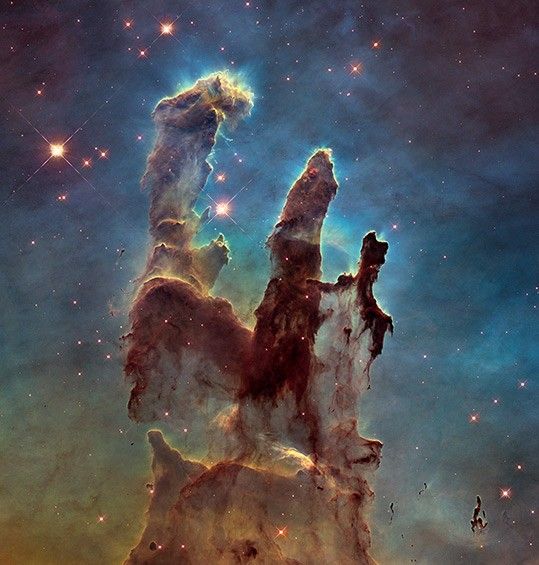1 min read
Cosmic eXploration: Hubble eXtreme Deep Field
In 2004, the Hubble Ultra Deep Field (HUDF) provided a ground-breaking view of distant galaxies. In 2009, those data were augmented with new infrared observations to create the HUDF-IR. In 2012, the Hubble eXtreme Deep Field (HXDF) combined those images along with a complete census of archival datasets to see yet farther into the universe. The HXDF contains roughly 5,500 galaxies stretching over 13 billion light-years of space, and represents astronomy's deepest view into the cosmos.
This scientific visualization depicts a flight through the HXDF galaxies. Using measured and estimated distances for approximately 3,000 galaxies, astronomers and visualizers constructed a three-dimensional model of the galaxy distribution. The camera traverses through the thirteen-billion-light-year dataset and ends in blackness, not because more distant galaxies do not exist, but because such galaxies have not yet been observed. For cinematic reasons, the exceedingly vast distances in the 3D model have been significantly compressed.
- Release DateFebruary 19, 2014
- CreditVisualization: Frank Summers (STScI), Lisa Frattare (STScI), Tiffany Borders-Davis (STScI), Zoltan Levay (STScI), Gregory Bacon (STScI); Science: Garth Illingworth (Lick Observatory), Pascal Oesch (UC Santa Cruz), D. Magee (UC Santa Cruz)
Share
Details
Claire Andreoli
NASA’s Goddard Space Flight Center
Greenbelt, Maryland
claire.andreoli@nasa.gov
Frank Summers (STScI), Lisa Frattare (STScI), Tiffany Borders-Davis (STScI), Zoltan Levay (STScI), Gregory Bacon (STScI)
Garth Illingworth (Lick Observatory), Pascal Oesch (UC Santa Cruz), D. Magee (UC Santa Cruz)




























